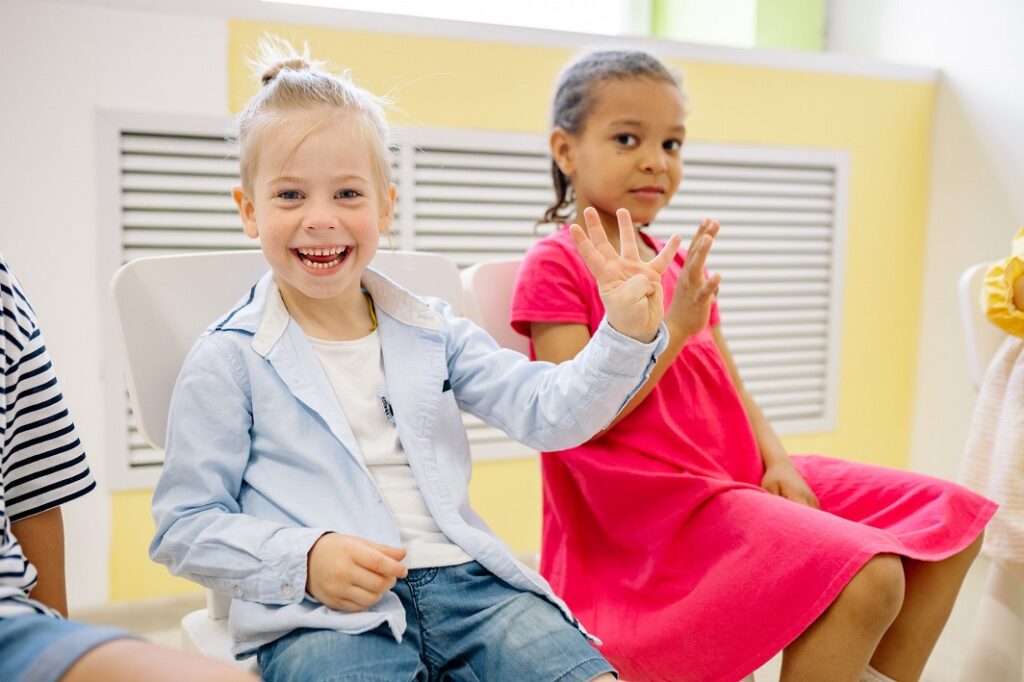Context Education
Education in Slovenia
The Slovenian education system envisages that all children have the right to enroll in school under the same conditions.

Overview
Citizens of other EU member states, Slovenes without Slovenian citizenship and beneficiaries of international protection can obtain education under the same conditions as Slovenian citizens. Underage third-country nationals (TCNs) are entitled to the same access to primary and secondary school education (if fulfilling the enrolment criteria) as nationals. On tertiary level, usually an additional 5% of enrolment places are ensured for citizens from non-EU member states/TCNs calculated based on enrolment capacity for Slovenian and other EU nationals (TCN students are often subject to paying the tuition fees). Adult education programs, including language courses, are available for TCNs. As far as the legislative and strategic framework for inclusive education system, since 2004 Slovenia has developed several key documents that have set a foundation for a comprehensive education and integration of migrant children. Among the most relevant documents in the field of inclusion of migrant children into the education system are: Strategy of integration of migrant children, pupils and students in the training and educational system in the R. of Slovenia (2007), Strategy of education and training of Roma in the R. of Slovenia (2004), Guidelines for education of migrant children in kindergartens and schools (2009) that were further supplemented in 2012 as Guidelines for the integration of migrant children in kindergartens and schools, as well as the Code of multicultural dialogue for adult educators (2010).
The Guidelines for the integration of migrant children in kindergartens and schools (2012) define the principle of having “inclusive approach towards the realization of the right to education of migrant children for their successful integration and contribution to an intercultural society”. While the Pre-School Institutions Act does not specifically mention third-country nationals (TCNs), it does state that preschool education is conducted according to the principles of equal opportunity for children and parents, taking account of differences among children, the right to choose and the right to be different.
According to the Statistical Office of the Republic of Slovenia data, in the 2019/2020 school year, 5.253 children who were foreign citizens attended preschool education (boys: 2.773, girls: 2.480). Most (4.636) came from European countries (Bosnia and Herzegovina: 2.654; UNSC Resolution 1244-administered Kosovo: 683; Northern Macedonia: 517). In the 2019/2020 school year, 11.860 foreign nationals attended the primary school programs, the vast majority (11.337) of whom came from European countries (Bosnia and Herzegovina: 5.497; UNSC Resolution 1244-administered Kosovo: 2.230; Northern Macedonia: 1.263). Data from the Statistical Office of the Republic of Slovenia do not provide insight into the number of foreign students studying in Slovenia in secondary school programs. The Statistical Office also publishes data on adult primary education, but it is not disaggregated by citizenship. At the tertiary level, 6.448 foreign citizens were enrolled in educational programs in the 2019/2020 academic year (of which 3.687 were men and 2.760 were women). Almost 60% were citizens of the countries of the former Yugoslavia (3.868).
Upon arriving in Slovenia, younger migrant children have – in addition to the regular curriculum – access to additional professional support (teaching assistance) with learning the Slovene language as well as support in the overall learning process. Rules on norms and standards for the implementation of educational programmes in secondary education (2010) lay down the obligation for high schools to organize Slovene language courses for high-school students who do not speak or have limited knowledge of the language and need additional learning assistance. For high school students, the language courses are organized only in the first two years of their education in Slovenia. The additional learning support is funded by the Ministry of Education, Science and Sport, who in addition finances classes in the mother tongue of migrant children. In practice these classes have been held in Albanian, Bosnian, Croatian, Dutch, Finnish, Macedonian, Russian, Serbian and other.
As for asylum seekers and their access to education, according to the AIDA report, in practice asylum seekers and children do not face considerable obstacles when accessing the education system, in particular elementary school. Some challenges have been noticed when adult asylum seekers wish to enrol in high schools, as they must pay a tuition fee (this is also applicable to Slovenian citizens). However, it must be noted that in practice it is very rare for asylum seekers to enter high schools. In 2016 the education program for Literacy in Slovene for adult speakers of other languages with an addition for asylum seeking children aged 15-18 years was developed and adopted by the Slovenian Institute for Adult Education. The program enables a more suitable inclusion in the elementary school program for adults. Additionally, the program also provides adaptive measures that help all asylum-seeking children increase their knowledge of Slovene language and ensure a smoother integration in their new communities.
Addressing the specifics of inclusion of asylum-seeking and refugee children into primary-level education, the Ministry of Education, Science and Sport recommends a two-step inclusion model. Prior to enrolment of a pupil into regular classes, a 20-hours preparatory phase is organized for the children. Thereafter, children are included in regular classes, whereby they are entitled to additional professional assistance in learning the Slovene language; a continuous form of implementation is recommended. After completing the introductory phase, the pupil is included in a follow-up program, where he/she is provided with additional support in the period of two school years, as the program includes activities offered both by school and in the local environment (learning Slovene as the second language, learning assistance, individual programs for pupils, adapting methods and forms of work in teaching and adjusting the assessment during the school year, supporting involvement in interest activities at school and in the local environment, various holiday opportunities and activities in the local environment, advanced language courses and support in organizing complementary classes of mother tongues and the culture of immigrant children). An exemplary model is the Livada Primary School (Ljubljana) which has a specific character in Slovenia due to the diversity of its pupils: more than 90 % of pupils are of other ethnic or ethnic affiliation.
The National Integration Evaluation Mechanism report for Slovenia for 2018, which primarily examined the situation of asylum seekers and beneficiaries of international protection, identifies the following challenges in education: lack of documentation of previously obtained education in the country of origin or of previous residence and difficulties in having education completed in the country of origin recognized in Slovenia; the language barrier; and lack of tailored free language courses with an individual approach and adapted to the needs of illiterate persons and limited scope of language courses for family members of persons with recognized international protection. Furthermore, the report acknowledges that “/there are no special vocational trainings or employment-related education programmes for refugees, therefore they need to meet the same conditions as everyone else, which is often extremely difficult”.
In 2021, the Foreigners Act has been amended with a provision that TCNs must prove to possess sufficient means of subsistence and return to their country of origin to obtain or renew the visa for Slovenia.
Covid-19
Since the beginning of the Covid-19 pandemic, the education system and staff had to adapt their teaching processes and quickly adjust to the new reality, while utilizing new (online) methods of work. Some of the methods mentioned hereafter were reported by practitioners. Among the most successful adaptive methods of learning Slovene language for migrant children was the use of visual materials, videos, and interactive games in the teaching process. Reduction and adaptation of the learning materials, provision of learning aid for specific school subjects with the help of ICT was also one of the ways to proceed with the teaching process. Some of the challenges reported were lack of support available for children that migrated to Slovenia during the Covid-19 pandemic, as the Slovenian school system does not have flexibility regarding the enrolment of children. Nevertheless, the schools reported that the adaptation to the educational process which was reached during the first wave in the spring of 2020 was used as good practice and enabled both students and teachers to be better prepared, both from ICT point of view and to be able to act more collaboratively in the new educational process during the second wave in the Autumn of 2020.
In April 2020, the Educational Research Institute conducted a research on the learning processes with migrant children during the Covid-19 pandemic. The institute gathered feedback from 12 schools in total, 9 elementary and 3 secondary schools throughout Slovenia on their work with migrant children during Covid-19. The main obstacles identified were: lack of technical equipment – almost all of the migrant pupils lacked IT equipment necessary for the continuation of the learning process; lack of digital skills; lack of support from parents due to language barriers; and obstacles in the establishment of communication between school staff and pupils or parents. Some families and children also reported a general lack of a working space, where the pupils could focus on their school activities. Lack of additional support in the learning process due to Covid-19 prevention measures was also reported as unavailable.
Do you want to share your project with our community and stakeholders?
Context Education
Education in Romania
Overview Gaining access to education can be a serious challenge for people […]
Overview Gaining access to education can be a serious challenge for people […]
Context Education
Education in the Netherlands
Overview Children: In the Netherlands, education is compulsory for children between the ages of five […]
Overview Children: In the Netherlands, education is compulsory for children between the ages of five […]

